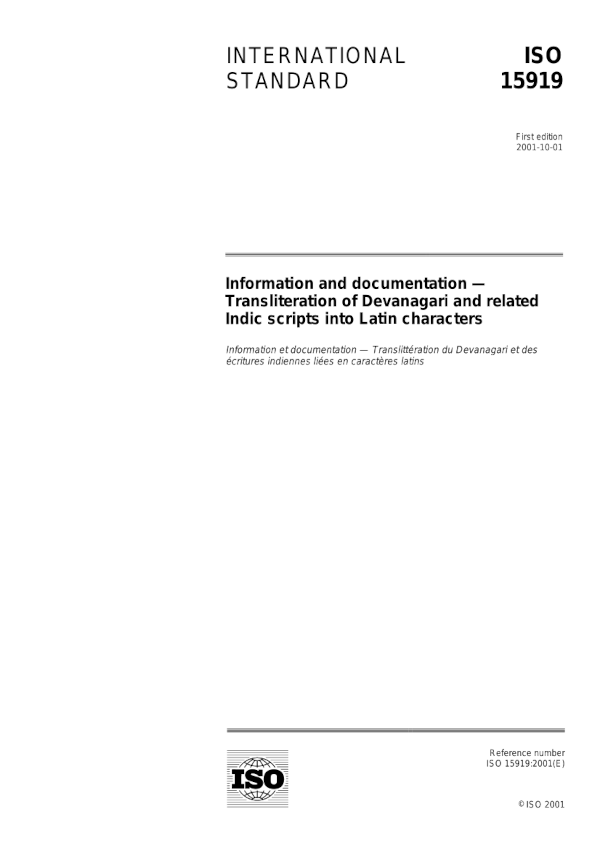
| ⟪ ISO 15919 ⟫ | «Linguistics» | «Home» | «Map&Rev» |

The auxiliary Roman alphabet for Bengali, which the ‘ISO 15919 Transliteration of Devanagari and related Indic scripts into Latin characters’ lays out, closely follows the Bengali orthography.
The ISO 15919 scheme provides for both print, or diacritic, and 7-bit ASCII transliteration. The first line has the Bengali characters, the second has the diacritic scheme and the third has 7-bit ASCII (ISO 464 repertoire) scheme.
| অ | আ | ই | ঈ | উ | ঊ | ঋ | ৠ | ঌ | ৡ | এ | ঐ | ও | ঔ |
| a | ā | i | ī | u | ū | r̥ | r̥̄ | l̥ | l̥̄ | e | ai | o | au |
| a | aa | i | ii | uu | ,r | ,rr | ,l | ,ll | e | ai | o | au |
| ক | খ | গ | ঘ | ঙ | চ | ছ | জ | ঝ | ঞ | ট | ঠ | ড | ঢ | ণ |
| k | kh | g | gh | ṅ | c | ch | j | jh | ñ | ṭ | ṭh | ḍ | ḍh | ṇ |
| k | kh | g | gh | ;n | c | ch | j | jh | ~n | .t | .th | .d | .dh | .n |
| ত | থ | দ | ধ | ন | প | ফ | ব | ভ | ম | য | র | ল | (ব) | শ | ষ | স | হ |
| t | th | d | dh | n | p | ph | b | bh | m | y | r | l | (v) | ś | ṣ | s | h |
| t | th | d | dh | n | p | ph | b | bh | m | y | r | l | (v) | ;s | .s | s | h |
| ড় | ঢ় | য় | ৎ | ং | ঃ | ঁ |
| ṛ | ṛh | ẏ | (t) | ;m | .h | ~ |
| .r | .rh | ;y | (t) | ṁ | ḥ | m̐ |
The character e and o are in effect long, to be coded ē (ee) and ō (oo); their short counterparts are absent in Bengali, making them unambiguous. But if it is de rigour to maintain uniformity (among other Indic schemes), the characters should be considered long, and coded doubled.
There are some extensions to the Bengali characters used in the transliteration of words from other languages. The ISO 15919 proposal draft dealt with various options.
qa Perso-Arabic qaaf (ق)
_kha Perso-Arabic khaa' (خ)
.ga Perso-Arabic ghayn (غ)
za Perso-Arabic dhaal (ذ), zaa' (ز), zhaa' (ژ),
Daad (ض), Dhaa' (ظ)
fa Perso-Arabic faa' (ف), English f
wa Perso-Arabic waaw (و), English w
Rev.: vii·xi·mmxxii